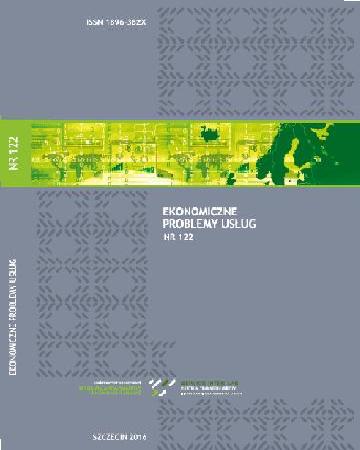
ISSN: 1896-382X
eISSN: 2353-2866
OAI
DOI: 10.18276/epu.2016.122-37



Issue archive /
nr 122 2016
Ocena potencjału innowacyjnego organizacji pod kątem wdrożenia rozwiązań IT – założenia modelu
(Assessment of innovative potential of organisation in an implementation of it solu-tions – assumptions of the model)
| Authors: |
Jędrzej
Wieczkorkowski
Szkoła Główna Handlowa w Warszawie Magdalena Jurczyk-Bunkowska Politechnika Opolska |
| Keywords: | innovation European Funds maturity innovative IT projects evaluation of innova-tive potential |
| Data publikacji całości: | 2016 |
| Page range: | 10 (391-400) |
Abstract
The article discusses the assessment of an innovative potential of an organization. The issue was described from the point of view of applications assessment of programs financed from public funds. The evaluation aims to improve the allocation of financial resources. The article presents different approaches to innovation and the principles of the evaluation of IT projects in chosen programs. The authors propose an initial model for assessing the maturity of innovation in organizations. It is based on the ability to implement innovative projects and their products.
Download file
Article file
Bibliography
| 1. | Abernathy W., Utterback J. (1978), Patterns of industrial innovation, „Technology Review”, No. 80/7, s. 40–47. |
| 2. | Berg Consulting (2013), Raport The Innovation Maturity Model – The strategic and capability building steps for creating an innovative organisation. |
| 3. | Drucker P.F. (1992), Innowacja i przedsiębiorczość. Praktyka i zasady, Warszawa: Państwowe Wydawnictwo Ekonomiczne. |
| 4. | Essmann H., du Preez N. (2009), An Innovation Capability Maturity Model – Devel-opment and initial application, World Academy of Science, „Engineering and Tech-nology”, 53, s. 435–446. |
| 5. | Estrin J. (2009), Closing the innovation gap, New York: McGraw-Hill. |
| 6. | Fagerberg J. (2006), Innovation: A Guide to the Literature, w: The Oxford Handbook of Innovation, red. J. Fagerberg, D.C. Mowery, R.R. Nelson, Oxford: Oxford University Press. |
| 7. | Garcia R., Calantone R. (2002), A Critical Look at the Technological Innovation Ty-pology and Innovativeness Terminology: A Literature Review, „The Journal of Product Innovation Management”, No. 19, s. 110–132. |
| 8. | Gartner (2011), Raport A Maturity Model for Innovation Management. |
| 9. | Koberg C., Detienne D., Heppard K. (2003), An Empirical Test of Environmental, Or-ganizational, and Process Factors Affecting Incremental and Radical Innovation, „Journal of High Technology Management Research”, No. 14/1, s. 21–45. |
| 10. | KPMG (2014), Raport Dojrzałość innowacyjna przedsiębiorstw w Polsce. |
| 11. | OECD (2005), Podręcznik Oslo. Zasady gromadzenia i interpretacji danych dotyczą-cych innowacji. Pomiar działalności naukowej i technicznej, wydanie trzecie, Komisja Europejska. |
| 12. | Schumpeter J. (1934), The Theory of Economic Development: An Inquiry into Profits, Capital, Credit, Interest, and the Business Cycle, Harvard: Harvard University Press. |
| 13. | http://cppc.gov.pl/programy/popc-2/popc/ (2016). |
| 14. | https://www.funduszeeuropejskie.gov.pl/ (2016). |
| 15. | http://www.poig.2007-2013.gov.pl (2016). |